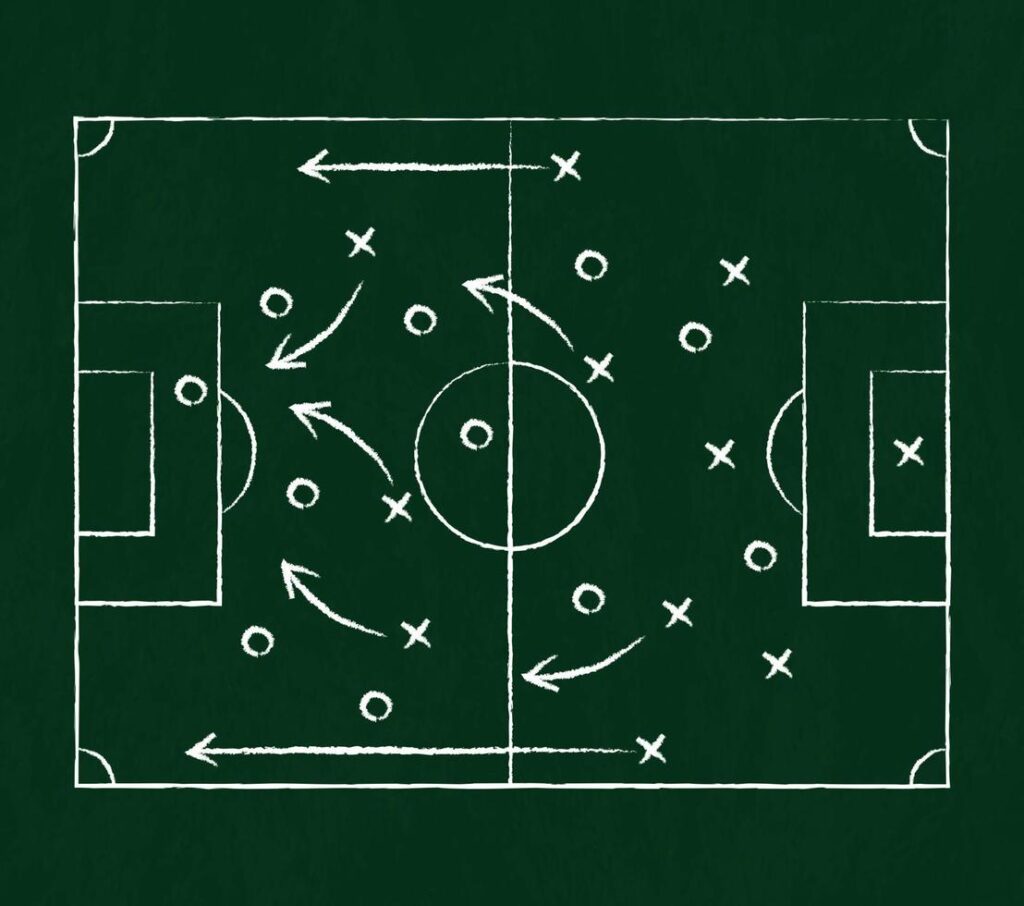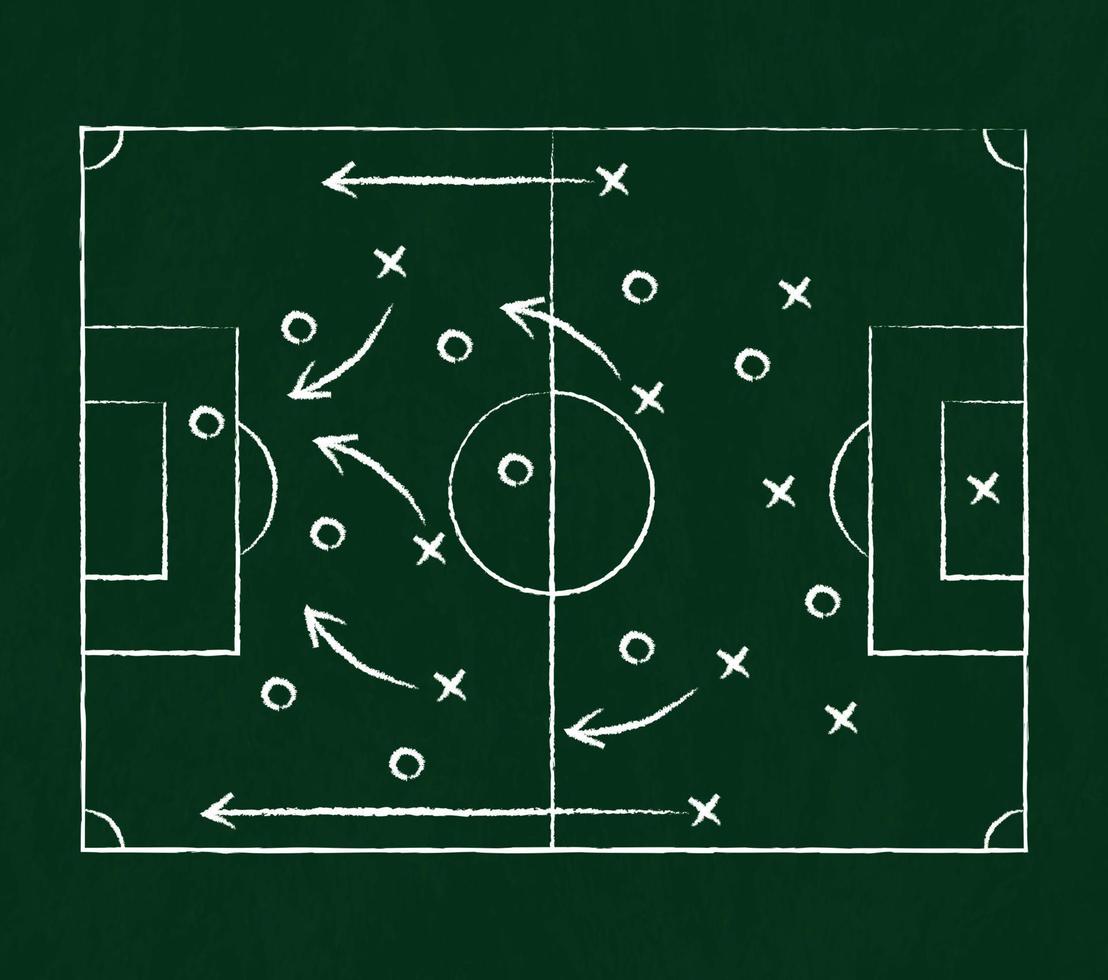Football is the sport of soccer, and its evolution over the years is quite dramatic. Just thinking of the basics – score goals and defend your net – is simple. However, the strategies and tactics that actually develop during a game are much more complex than most fans realize. Regardless of whether one is an avid football fan or a novice, an understanding of the game’s underlying tactics has grown.
We will delve further into the tactical aspect of football in this blog post. We’ll dissect important formations, describe the functions of various players, and examine the covert tactics used by teams to outmaster their rivals. You’ll have a better grasp of the beautiful game and the strategies used to create the enchantment on the field by the end.

The Evolution of Football Tactics
Football tactics have changed much since the game’s inception. From a simple game of passing and shooting, it has become a complex battle of wits, positioning, and strategic planning. Johan Cruyff, Arsène Wenger, and Pep Guardiola have changed the tactical landscape with their innovative ideas, while Sir Alex Ferguson and José Mourinho have left their mark by mastering counter-attacking football and defensive solidity.
From “Kick and Rush” to “Tiki-Taka”
During the 1950s and 60s, football played on pace and power. This is because it relied more often on a direct approach: bang the ball upfield with less regard for how players are positioning themselves. Thus, it meant much physicality, straightforward style in the pattern of “kick and rush”, and little tactical nuance.
However, by the late 20th century, this approach began to change. Coaches started playing possession football with complex passing systems to dominate the game. The “tiki-taka” style, where Barcelona and the Spanish national team under Pep Guardiola played with short, swift passes and controlled the game by maintaining possession of the ball for long periods of time, thus wearing out their opponents. It was the dawn of a much more tactical and cerebral game of football.
The Modern Era: A Battle of Systems
Tactics have become more crucial in today’s football world. Teams use advanced formations and detailed strategies to break down defenses, exploit weaknesses, and gain the upper hand. The tactical battle is no longer just about individual skill but also about how teams interact, move, and press as units.
Let’s explore some of the key strategies and formations that underpin modern football.
Key Football Formations and Their Tactical Roles
1. The 4-3-3 Formation: Control and Creativity
The 4-3-3 is one of the most popular and versatile formations in modern football. It consists of four defenders, three midfielders, and three forwards, with a strong emphasis on controlling the middle of the pitch.
• Defenders: The full-backs in a 4-3-3 often push up the pitch to support attacks, overlapping with the wingers and providing width to stretch the opposition’s defense. The center-backs are typically tasked with maintaining defensive solidity, with one often playing a more aggressive role, stepping out to press when necessary.
•Midfielders: The three central midfielders are the backbone of maintaining possession and dictating the tempo of the game. In most cases, one player acts as a defensive midfielder, often referred to as the “anchor,” who shields the backline, while the other two midfielders contribute to both attack and defense, making the formation flexible and adaptable.
• Forwards: This is the forward trio, which comprises a central striker and two wingers. This trio provides speed, creativity, and goal threats. The wingers can make inside cuts, and the striker will hold up the ball or wait for through balls from the midfield.
Example: Barcelona during the Guardiola years relied heavily on a 4-3-3 that centered on possession, intricate passing, and quick transition. Xavi and Iniesta dominated the middle, allowing for total control, and Messi, Villa, and Pedro were used for the threat in attack.
2. The 4-2-3-1 Formation: Balanced and Flexible
Another very recent favourite is the 4-2-3-1, which is all about defensive stability with attacking flair. It comes with two defensive midfielders who offer protection to the back four while ensuring a central attacking midfielder (CAM) who drops behind the striker.
• Defenders: The two full-backs should remain back as they provide much support to the center-backs; otherwise, the center-backs are keen on clearing and protecting the ball.
•The two defensive midfielders are there as a shield of defense and often break up attacks from the opposite side. Additionally, they pass the ball to players who are going to be really creative further forward.
•CAM: This player is the most creative one in this system, with the role of linking up the play and feeding the lone striker. The CAM will usually pull the strings in the final third by making key passes and unlocking the defense.
•Wingers and Striker: The wingers in a 4-2-3-1 can cut inside, creating space for the full-backs to overlap. The striker plays as a focal point, holding the ball up and finishing crosses or through balls.
Example: Teams such as Manchester United under Sir Alex Ferguson and Chelsea under José Mourinho have successfully employed this formation because it gives a solid defensive base while allowing quick counter-attacks through the CAM and wingers.
3. The 3-5-2 Formation: Control the Midfield, Push for Width
The 3-5-2 is not often used in football nowadays but it still proves successful in controlling midfield and providing width. The team has three central defenders, five midfielders, and two attacking players.
•Defenders: The central defenders form a collective defense, although one of the central defenders can play a bit sweeper like. The full backs are really important because they advance to open up the sides and provide cover for the attacks.
•Midfielders: These five midfielders give a real solidity in the middle of the park. Often the two central midfielders are primarily focused on retaining possession, with the wide midfielders (wing-backs) giving support for both attack and defense, literally running the width of the field.
•Forwards: The two forwards in this system work off each other well to create the chances for their side to score. One forward might hold the ball up whilst the other moves into the channels or behind the defenders.
For instance, Juventus teams, under managers like Antonio Conte, have, for instance, utilized the 3-5-2 system, using their wing-backs, Dani Alves and Stephan Lichtsteiner to draw out opponents and balance attack and defense.
Secrets of Football
While the formations mentioned above are fundamental, modern football involves complex strategies that often go unnoticed by casual fans. Let’s take a closer look at some hidden tactics that teams use to outsmart their opponents.
1. Pressing and Counter-Pressing (Gegenpressing)
Pressing is a defensive strategy where a team looks to win the ball back high up the pitch by closing down the opposition quickly. It is often used in order to prevent the opposition from building their play and to create quick counter-attacking opportunities.
•Popularized by Klopp at Liverpool, Gegenpressing takes that strategy a notch higher. Upon losing possession of the ball, players do not fall back in defense but will immediately press an opponent to take the ball off them in those dangerous areas, thus overwhelming that team and leaving them with quicker turnovers, quite often leading to scoring chances.
Real-Life Example: Liverpool’s 4-3-3 system under Klopp is a prime example of gegenpressing. Players like Mohamed Salah, Sadio Mané, and Roberto Firmino press relentlessly, forcing defenders and midfielders to make mistakes in dangerous areas.
2. Build-Up Play from the Back
Another common tactical approach is the emphasis on building attacks from the back. This is essentially the goalkeeper and center-backs playing short passes to maintain possession and slowly shift the ball up the field.
• Teams employing this approach usually have a “sweeper-keeper” – a goalkeeper who doesn’t mind the ball in his hands and can play some as a sixth outfielder. This approach makes the opponent push further up in their field, which then creates space for quick transitions.
Example: In the case of Manchester City under Guardiola, the team applies build-up play from the back to dominate possession and create attacking situations. This concentration on passing out from defense is supported by having a goalkeeper like Ederson, who can distribute long passes to create counter-attacks.
3. Creating Overloads
Creating numerical advantages, or “overloads,” is a basic tactical movement. Teams are usually focused upon creating the 2v1 or 3v2 situation in the key areas of the pitch, whether through wide areas or through the midfield. This way they can win the ball, carry out a number of more passes, and penetrate the opposition’s solidity.
•Overloads are typically created when the full-backs or midfielders push forward to create extra numbers in attack or when one player pulls defenders out of position and creates space for a teammate.
Example: The “false nine” system at Barcelona, with Messi dropping deep into midfield, created overloads that allowed him to exploit spaces and link up with wingers and midfielders.
Conclusion: Football’s Tactical Depth
Football is about more than the 90 minutes of passing, running, and shooting. Instead, it forms a complex strategy and tactic involving managers and players. Whether it’s pressing high up the pitch or building from the back, making overloads on the flanks, football hidden strategies make games interesting and uncertain.
Understanding these tactics will allow you to appreciate not only the beauty of the goals but also the intelligence behind the movements and decisions on the field. Football is indeed a game of both brains and brawn.
If you are interested in digging deeper into the tactical side of football, stay tuned for more updates on this blog. And the next time you watch a match, look out for those hidden strategies – you will see the game in a whole new light!







